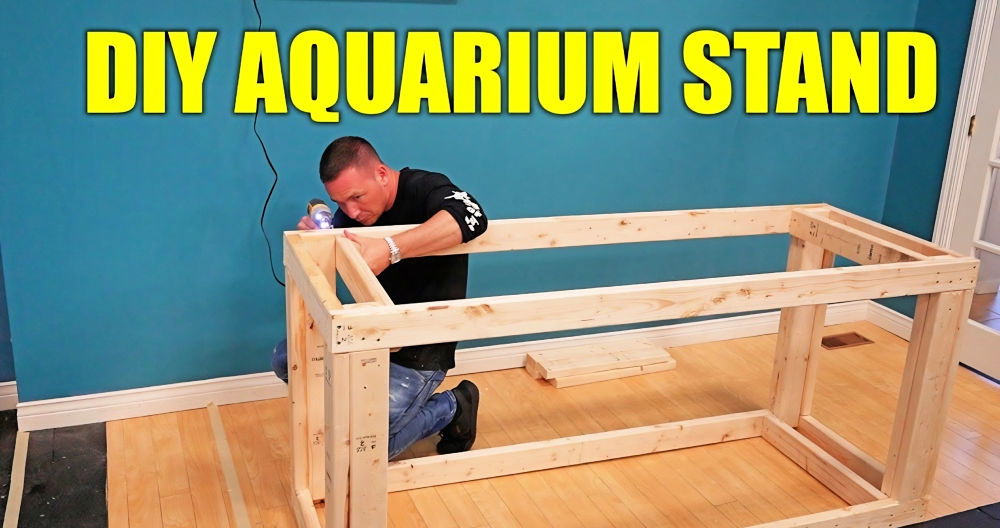Hello everyone! This is the story of how I finally laid down on a hammock for the first time in my life, and boy, was I missing out on something relaxing! Excited by the newly discovered comfort, I decided to embark on a DIY journey to build my own hammock stand over a weekend. Inspired by Anika's DIY Life, I’m thrilled to share with you how straightforward this project can be, using mainly 4 by 4 red wood. And guess what? You can easily follow along and create your own piece of backyard paradise.

Planning and Preparation
Discover the key importance of a hammock stand and the essential materials needed for planning and preparation.
Why a Hammock Stand?
Simply put, I wanted the flexibility to enjoy a hammock without the need for perfectly placed trees. Plus, the idea of building something with my hands was particularly appealing.
Materials Needed
- 4 by 4 Red Wood: For its durability and aesthetic appeal. It’s sturdy enough to support the weight without bending.
- Circular Saw & Drill: Essential tools for cutting and assembling the wood pieces.
- Exterior-Grade Screws (3-inch and 4-inch): These ensure that the structure is solid and can withstand outdoor conditions.
- Semi-Transparent Stain: To give the wood a protective layer and enhance its natural color.
- Eyebolts: These are crucial for hanging the hammock securely.
- Sandpaper: For smoothing out any rough edges after cutting.
- Clamps: To hold pieces together as they are being screwed in place.
Why These Materials?
The choice of red wood is not only for its strength but also for the beautiful finish it gives once stained. Exterior-grade screws are a must for any outdoor project to prevent rusting and degradation. Each material and tool was chosen to ensure durability, aesthetics, and ease of assembly.
Building Process Step by Step
Learn the building process step by step with this comprehensive guide: Half Lap Cuts, Base Assembly, Attaching Uprights, Fitting Braces, and Finishing Touches.
Step 1: Making the Half Lap Cuts
The first major step involved making half lap cuts on the bases and feet with a circular saw. I measured the thickness of the boards and set my circular saw depth to half of this thickness, ensuring a snug fit. Consistency was key here; the accuracy of these cuts determined the stability of the stand.
Step 2: Assembling the Base
After cutting, I laid out the pieces upside down and secured them with 3-inch exterior-grade screws. This process required a bit of maneuvering to ensure all parts aligned correctly.
Step 3: Attaching the Uprights
The uprights, cut at a 22-and-a-half degree angle, were perhaps the trickiest parts to deal with due to their unwieldiness. I enlisted a second pair of hands to hold them while I drilled pilot holes and fixed them with 4-inch screws. Their angle was crucial for both the aesthetics and functionality of the stand.
Step 4: Fitting the Braces
Cutting one end of the brace at 22 and a half degrees and then marking the exact spot for the 45-degree cut was essential for the perfect fit. Once satisfied, I attached the brace using 4-inch screws, ensuring the structure’s integrity.
Step 5: Finishing Touches
The top bar was aligned using clamps before securing. After a thorough sanding, I cleaned up the dust and applied a coat of semi-transparent stain, bringing out the red wood's natural beauty. I drilled a hole two inches from the top of the uprights for the eyebolts, which would hold the hammock.
The Final Step: Enjoying My Work
Clipping the hammock onto the eyebolts was the moment of truth – and success! The stand not only looked gorgeous but was also surprisingly lightweight, making it easy to move around.
Customization Options for Your DIY Hammock Stand
When building your own hammock stand, you have the opportunity to add personal touches and tailor it to your outdoor space. Here are some customization options to consider:
Staining or Painting: Protect and Beautify
Staining or painting your hammock stand serves two purposes: protection and aesthetics. It enhances the wood’s durability and shields it from weather elements, extending its lifespan. Plus, a well-finished stand adds visual appeal to your backyard.
- Choose the Right Finish: Opt for an outdoor wood stain or paint that is specifically designed for exterior use. Look for UV-resistant and water-repellent formulas.
- Prep the Surface: Sand the wood to create a smooth surface. Remove any dust or debris.
- Apply the Finish:
- Staining: Use a brush or rag to apply the stain evenly. Follow the manufacturer’s instructions for drying time and additional coats.
- Painting: Apply outdoor paint with a brush or roller. Consider using a primer first for better adhesion.
- Color Selection:
- Natural Tones: If you prefer a rustic look, choose a transparent or semi-transparent stain that allows the wood grain to show through.
- Bold Colors: Want to make a statement? Go for vibrant colors like turquoise, red, or yellow.
- Classic White: White paint gives a clean and timeless appearance.
Decorative Elements: Add Charm
Personalize your hammock stand by incorporating decorative elements. These small touches can transform a simple structure into a delightful focal point.
- Hooks and Hangers: Attach hooks to hang lanterns, wind chimes, or potted plants. These not only look charming but also serve a functional purpose.
- Hanging Planters: Install small planters along the sides of the stand. Fill them with colorful flowers or trailing vines.
- Carvings or Engravings: If you’re skilled with woodwork, consider adding subtle carvings or personalized engravings. It could be your family name, a favorite quote, or a simple pattern.
Rope or Fabric Accents: Comfort and Style
Beyond the wooden frame, think about the hammock itself. The material you choose for the hammock and its attachment points can enhance comfort and aesthetics.
Options:
- Rope Hammock: Classic and durable, rope hammocks evoke a beachy vibe. Choose natural cotton or weather-resistant synthetic ropes.
- Fabric Hammock: For added comfort, go for a fabric hammock. Look for weather-resistant fabrics like polyester or Sunbrella. These come in various colors and patterns.
- Macramé Accents: If you’re feeling adventurous, incorporate macramé knots into the attachment points. Macramé adds a boho touch and complements both rope and fabric hammocks.
The joy of a DIY hammock stand lies not only in its functionality but also in the creative choices you make. Enjoy the process, and soon, you’ll have a customized oasis for relaxation in your backyard!

FAQs About DIY Hammock Stands
Discover all you need to know about DIY hammock stands! From materials to construction tips, get answers to your FAQs in this comprehensive guide.
1. How Do I Choose the Right Location for My Hammock Stand?
Answer: Select a flat, stable area in your yard or garden. Avoid placing the stand on slopes or uneven ground. Consider factors like sun exposure, proximity to trees, and privacy.
2. How Do I Calculate the Weight Capacity of My Hammock Stand?
Answer: Determine the weight capacity by considering the type of hammock you plan to use. Check the manufacturer’s specifications for the hammock’s maximum load. Ensure your stand can support at least that weight.
3. Can I Customize the Look of My Hammock Stand?
Answer: Absolutely! Customize your stand by:
- Staining or Painting: Protect the wood and add color.
- Decorative Elements: Attach hooks, planters, or carvings.
- Rope or Fabric Accents: Choose a rope or fabric hammock that complements your style.
4. How Do I Maintain My DIY Hammock Stand?
Answer: Follow these maintenance tips:
- Inspect Regularly: Check for wear, loose bolts, or signs of rot.
- Clean and Protect: Remove dirt and debris. Apply wood sealant or paint as needed.
- Store Indoors: During harsh weather, disassemble and store your stand indoors.
5. Can I Make a Portable Hammock Stand?
Answer: Yes! Look for portable stand designs that are easy to assemble and disassemble. Consider lightweight materials like aluminum or collapsible frames for camping or travel.
Remember, building a hammock stand is both practical and enjoyable. Take your time, follow safety guidelines, and soon you’ll be relaxing in your own backyard oasis!
Conclusion
Building my own hammock stand was an incredibly satisfying weekend project. It combined a practical need with the pleasure of creating something with my own hands. For anyone sitting on the fence about starting a similar project, I say go for it. The process is straightforward, especially if you follow the steps carefully, and the result is absolutely worth the effort. Now, if you'll excuse me, my newly built hammock is calling for some relaxation time.













